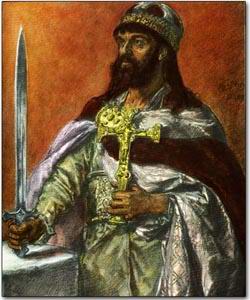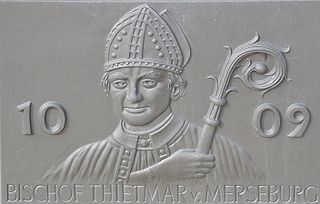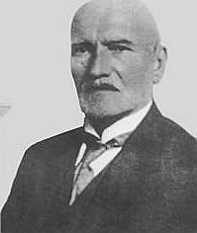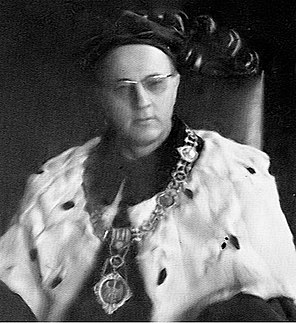The Piast dynasty was the first historical ruling dynasty of Poland. The first documented Polish monarch was Prince Mieszko I. The Piasts' royal rule in Poland ended in 1370 with the death of king Casimir III the Great.

Bolesław III Wrymouth, was a Duke of Lesser Poland, Silesia and Sandomierz between 1102 and 1107 and over the whole Poland between 1107 and 1138. He was the only child of Prince Władysław I Herman and his first wife Judith, daughter of Vratislaus II of Bohemia.
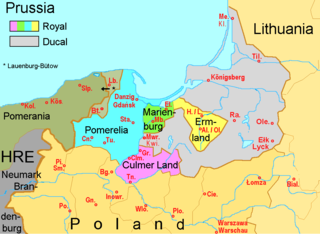
Pomerelia, also referred to as Eastern Pomerania or as Danzig Pomerania, is a historical region in northern Poland. Pomerelia lay on the southern shore of the Baltic Sea, west of the Vistula river and east of the Łeba river. Its biggest city was Gdańsk. Since 1999 the region has formed the core of the Pomeranian Voivodeship. Gdańsk Pomerania is traditionally divided into Kashubia and Kociewie.

Przemysł I, a member of the Piast dynasty, was Duke of Greater Poland from 1239 until his death, from 1241 with his brother Bolesław the Pious as co-ruler. He was able to re-acquire large parts of Greater Poland, ruling as Duke of Poznań and Gniezno from 1247 and, upon several inheritance conflicts with his brother, as Duke of Poznań and Kalisz from 1249, sole Duke of Greater Poland from 1250, and Duke of Poznań from 1253 until his death.

Leszek the White was Prince of Sandomierz and High Duke of Poland during 1194–1198, 1199, 1206–1210, and 1211–1227. During the early stages of his reign his uncle, Duke Mieszko III the Old, and cousin Władysław III Spindleshanks, from the Greater Polish branch of the royal Piast dynasty, contested Leszek's right to be High Duke.

Zbigniew, was a Prince of Poland during 1102-1107. He was first-born son of Władysław I Herman and probably Przecława, a member of the Prawdzic family.
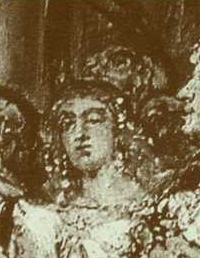
Bezprym was a Duke of Poland from 1031–1032.
Leszek of Masovia was a Polish prince from the Piast dynasty, the Duke of Masovia from 1173 until his death. He was the only son of Bolesław IV the Curly, Duke of Masovia and High Prince of Polan, who survived father. After his father death he inherited Masovia. At the beginning, Leszek ruled under the guardianship of his uncle Kazimierz II the Just. He was a man of poor health. For a short time he supported his other uncle, Mieszko III the Old, but later decided to reconciled with Kazimierz II, who after Leszek's death inherited his duchy.

WładysławOdonic was a Duke of Kalisz 1207–1217, Duke of Poznań 1216–1217, ruler of Ujście in 1223, ruler of Nakło from 1225, and Duke of all Greater Poland 1229–1234; from 1234 until his death he was ruler over only the north and east of the Warta river.
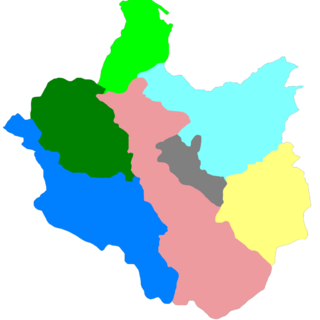
The last will and testament of the Piast duke Bolesław III Wrymouth of Poland, established rules for governance of the Polish kingdom by his four surviving sons after his death. By issuing it, Bolesław planned to guarantee that his heirs would not fight among themselves, and would preserve the unity of his lands under the Piast dynasty. However, he failed; soon after his death his sons fought each other, and Poland entered a period of fragmentation lasting about 200 years.
Mieszko Kazimierzowic was a Polish prince member of the House of Piast. According to some scholars, he was probably Duke of Kuyavia since 1058 until his death.
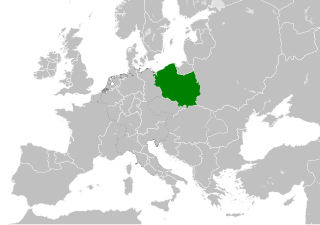
Civitas Schinesghe is the first recorded name related to Poland as a political entity first attested in 991/2. The original deed is missing, but is mentioned in an 11th-century papal regesta called Dagome iudex. It states that the Piast duke Mieszko I of Poland had given the guidance of unam civitatem in integro, que vocatur Schinesghe over to the Holy See.
Lambert Mieszkowic, was a Polish prince of the House of Piast.

Agnes of Poland, was a Polish princess member of the House of Piast and by marriage Princess of Pereyaslavl and Volynia and Grand Princess of Kiev since 1168.

The period of rule by the Piast dynasty between the 10th and 14th centuries is the first major stage of the history of the Polish nation. The dynasty was founded by a series of dukes listed by the chronicler Gallus Anonymous in the early 12th century: Siemowit, Lestek and Siemomysł. It was Mieszko I, the son of Siemomysł, who is now considered the proper founder of the Polish state at about 960 AD. The ruling house then remained in power in the Polish lands until 1370. Mieszko converted to Christianity of the Western Latin Rite in an event known as the Baptism of Poland in 966, which established a major cultural boundary in Europe based on religion. He also completed a unification of the West Slavic tribal lands that was fundamental to the existence of the new country of Poland.
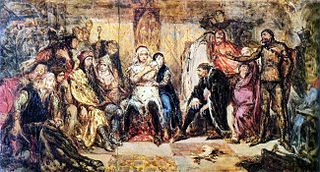
The Gąsawa massacre was a 1227 attack on a meeting of Polish Piast dukes which was being held near the village of Gąsawa in Kujawy, Poland. The High Duke of Poland, Leszek the White, was assassinated, and Duke Henry the Bearded of Silesia was gravely wounded.
